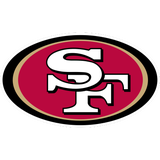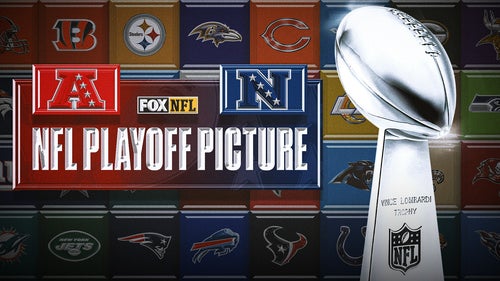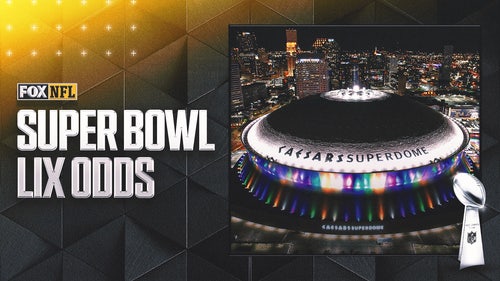
NFL: The Improbable Decline of America's No. 1 Sport

With the San Francisco 49ers on a bye, Niner Noise takes a look at how the NFL is falling in TV ratings and, perhaps, in the eyes of the American public. Football is still king, but is the sun setting on its reign?
Oct 1, 2016; London, United Kingdom; NFL commissioner Roger Goodell on the main stage during NFL on Regent Street prior to the International Series game between the Indianapolis Colts and the Jacksonville Jaguars. Mandatory Credit: Kirby Lee-USA TODAY Sports
Don’t get me wrong, I love football and the NFL. If I didn’t, well, I wouldn’t be doing this.
49ers
NFL Spin Zone 1 dNFL Week 8: Which Teams Are On Bye?
More headlines around FanSided:
1 d - A Blueprint to Start the San Francisco 49ers Rebuilding Process1 d - NFL Power Rankings Week 82d - NFL Power Rankings: At Least the 49ers Aren't Last in Week 82d - NFL Mock Draft 2017 Week 7: Defense Rules Top 102d - 2017 NFL Draft: Midseason Look at the San Francisco 49ers NeedsMore News at Niner Noise
But the entire 2016 season has me wondering — is the NFL losing its edge as the No. 1 sport in America?
Just look at the television ratings, posted by the Wall Street Journal in early October. Viewership is down, and it doesn’t seem as if fans are nearly as interested in the sport as, let’s say, just a few years ago.
What are the reasons? Well, if I had them, the league would probably hire me. There are dozens of possibilities. Heck, even commissioner Roger Goodell tried to make sense of it all.
“It’s something that I don’t think there’s a single reason for. I really don’t. We look at all those factors,” Goodell said, via NFL.com. “Everyone’s got theories, you guys got theories, others got theories. We work closely with our network partners. We see tremendous strength in our numbers. But we also know that the prime time ratings we’re seeing the most dramatic decrease.”
What are the theories though?
Well, it’s impossible to pinpoint only the biggest ones. That’s the problem. Let’s break it down.
Sep 12, 2016; Landover, MD, USA; Pittsburgh Steelers wide receiver Antonio Brown (84) does a celebration dance in the end zone after scoring a touchdown against the Washington Redskins in the third quarter at FedEx Field. The Steelers won 38-16. Mandatory Credit: Geoff Burke-USA TODAY Sports
Possible Causes
Sports Illustrated’s Andrew Perloff tried to come up with possible reasons why the NFL doesn’t quite seem as dominant anymore. He touched on how concussions have ruined the league’s image, officiating confusion, the Presidential election, national anthem protests and more.
All of these offer up some sort of explanation.
But there are a few which really stood out.
I need not go into Goodell’s reputation as one of the most disliked commissioners in professional sports. His decision making, especially in regards to player discipline, almost seems determined on his mood for the day.
Oh, and player controversies (see: kicker Josh Brown) only serve to drive a bigger wedge between the league and the fan base. Spygate, deflategate and whatevergate, anyone?
Back on track, the league is seemingly coming up with new ways to make the game, well, less fun.
The “No Fun League,” a moniker now assigned the NFL, hands out fines for wide receiver Antonio Brown’s touchdown celebration or running back Carlos Hyde’s arm flexing.
Things you can do in the NBA you can’t in the NFL
✔︎ Flex
✔︎ Dance
✔︎ Shoot imaginary bow and arrows
✔︎ Have funhttps://t.co/3xE6fqjMrb— SB Nation (@SBNation) October 27, 2016
.@WhitlockJason argues Josh Norman and others who criticize the NFL for being the ‘No Fun League’ simply “don’t know, what they don’t know.” pic.twitter.com/tqPg0HKuFW
— Speak For Yourself (@SFY) October 14, 2016
Football is an emotional sport. I’m no sociologist, but I have a hunch this generation doesn’t mind celebrations and a little smack talk from time to time. Heck, it makes the game interesting.
But that can’t be it. At least not all of it.
Dec 11, 2014; St. Louis, MO, USA; St. Louis Rams defensive end William Hayes (95) looks at a tablet computer on the bench during the first half against the Arizona Cardinals at the Edward Jones Dome. Mandatory Credit: Jasen Vinlove-USA TODAY Sports
The New NFL Media Policy
In case you missed it, the league introduced a mandated restriction on media usage during, and even shortly after, each and every game.
Nancy Armour of USA Today described it in greater detail, but the gist of it is only the NFL is allowed to post live, in-game highlights. Not teams or other media outlets.
It’s an attempt to try and control the media market. But in an era of high-tech gadgets and visible media flooding the market, the attempt seems feeble at best. It’s not a good look.
Whereas the NBA holds a polar-opposite policy. The Association embraces the sharing of its media by all of its teams and basically considers it free advertising and marketing of its own brand.
What a way to embrace the 21st Century!
Oh, not surprisingly, the NBA has watched its ratings soar while the NFL’s have plummeted.
Sep 29, 2016; Cincinnati, OH, USA; Cincinnati Bengals wide receiver Brandon LaFell (11) makes a catch as Miami Dolphins cornerback Xavien Howard (25) defends in the first half at Paul Brown Stadium. Mandatory Credit: Aaron Doster-USA TODAY Sports
Oversaturation and a Bad NFL Product
Another one of Perloff’s reasons was the fact the NFL has simply oversaturated the market.
Just think, when was the last good Thursday Night Football game you watched? Sure, a 16-game schedule is fine. But now we have games Thursday night, all day Sunday and Monday night. Tack on Saturday flex games late in the season and, well, do you really expect a casual fan is going to tune in constantly?
It wouldn’t be as bad if the on-field product was better. But it’s not.
Without diving too far into the details, just consider Perloff’s breakdown:
The first two night games this year featured the Broncos without Peyton Manning and the Patriots without Tom Brady. Tony Romo is out. Aaron Rodgers, Cam Newton and Andrew Luck are having tough seasons. Also, there are a lot more mediocre teams this year.
Last season, the Cardinals were 13–3 and the Jets were 10–6, and they came into last Monday night’s matchup at 2–3 and 1–4 respectively. All three primetime packages have featured more losing teams than the NFL could have expected.
The league is losing its star-studded power. And while we should expect, or at least hope, to get it back, all this means is viewers may be more inclined to watch something else.
Rules may also play a factor. What’s a catch? Why can’t defenses actually, you know, defend anymore? How does quarterback Cam Newton wind up taking so many hits, but if an opposing player taps quarterback Tom Brady on the shoulder, it’s a penalty?
Huh? Confusion sparks disinterest.
Jan 24, 2016; Denver, CO, USA; New England Patriots head coach Bill Belichick in the AFC Championship football game against the Denver Broncos at Sports Authority Field at Mile High. Mandatory Credit: Mark J. Rebilas-USA TODAY Sports
Few Polarizing Teams
Well, the New England Patriots may still fall into this boat. Maybe the Seattle Seahawks for 49ers fans.
But any story or entity of this type needs a hero and a villain. I suppose Goodell is one, but that doesn’t help matters much.
Let’s go back to the NBA for a second. Love them or hate them, the Golden State Warriors are a team you’ll want to watch (and yes, I’m a GSW fan and have been long before the days of Mike Dunleavy and Troy Murphy).
Teams like these increase ratings and draw interest.
Think of the 1970s Pittsburgh Steelers, the 1980s 49ers, the 1990s Dallas Cowboys or the 2000 Patriots. You couldn’t help but take a side, regardless of your fan allegiance.
Few teams exist like that now. And while the parity is good, who are the heroes and villains?
There aren’t any, in reality.
More from Niner Noise
In truth, football is still king. And it’s highly unlikely the NFL will shrink its television presence simply because it’s the most profitable thing networks can air at the time.
And the controversies and confusion still won’t deter the vast majority of the fan base who still crave Sunday action. Thursday, Monday and even some Saturdays too.
But if there’s one takeaway from all this, it’s the NFL is not quite the untouchable giant it once was. Not to say this is an unshakable trend. Things change, the league can change.
Yet such a shift seems the furthest from happening.
This article originally appeared on











